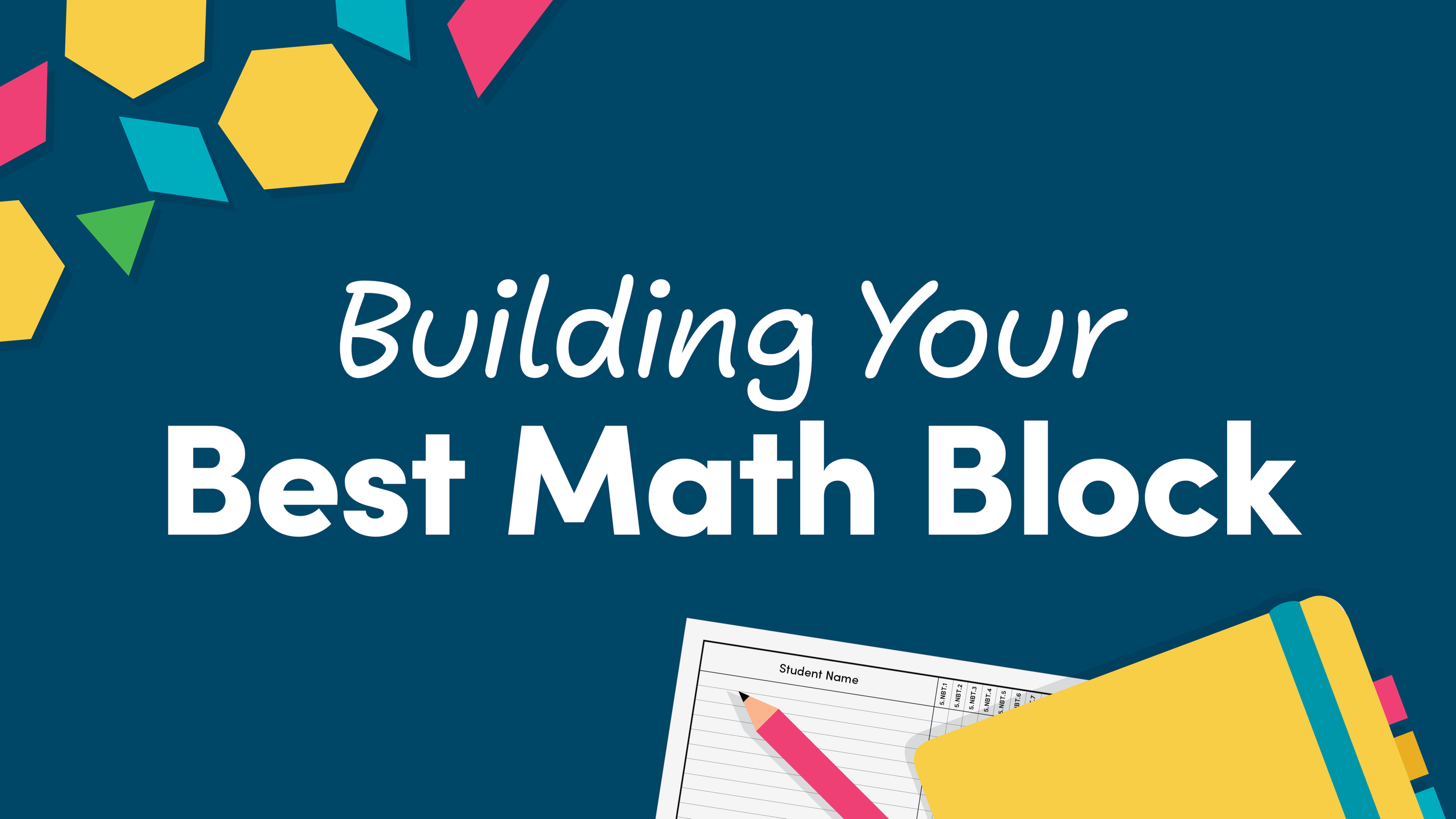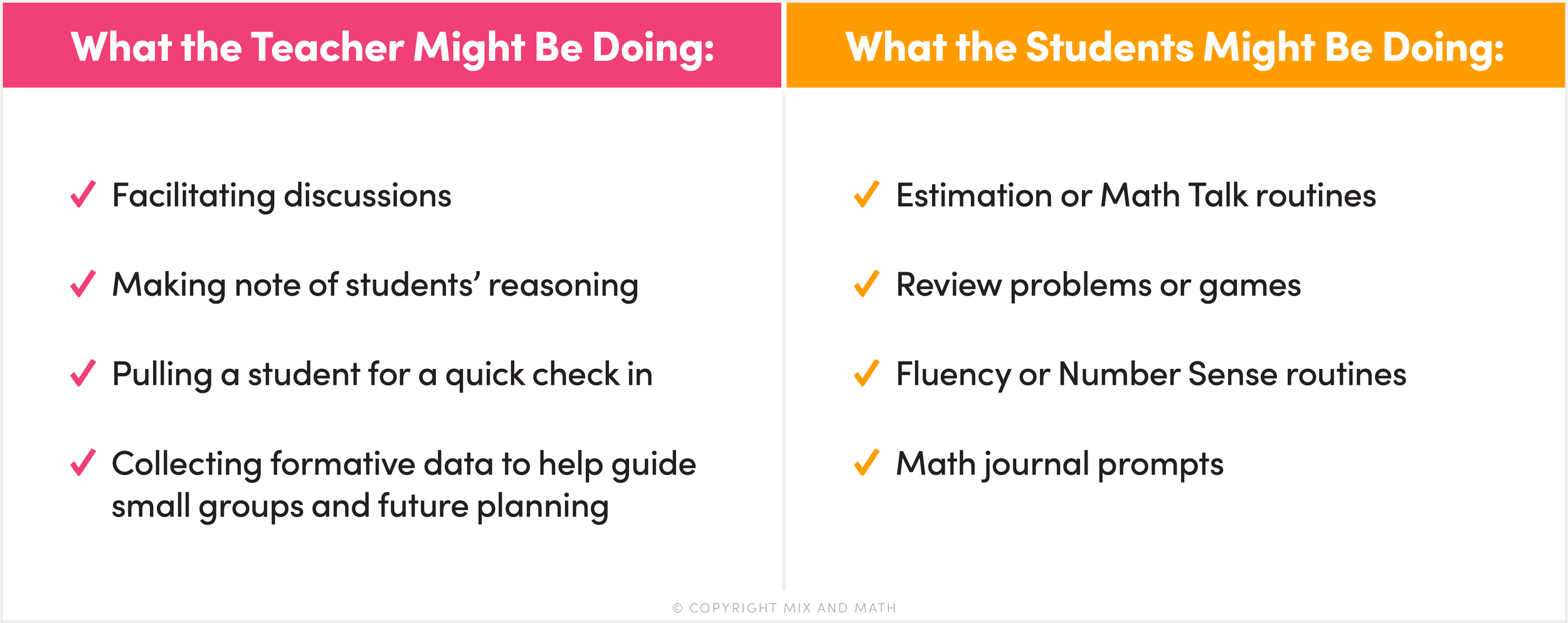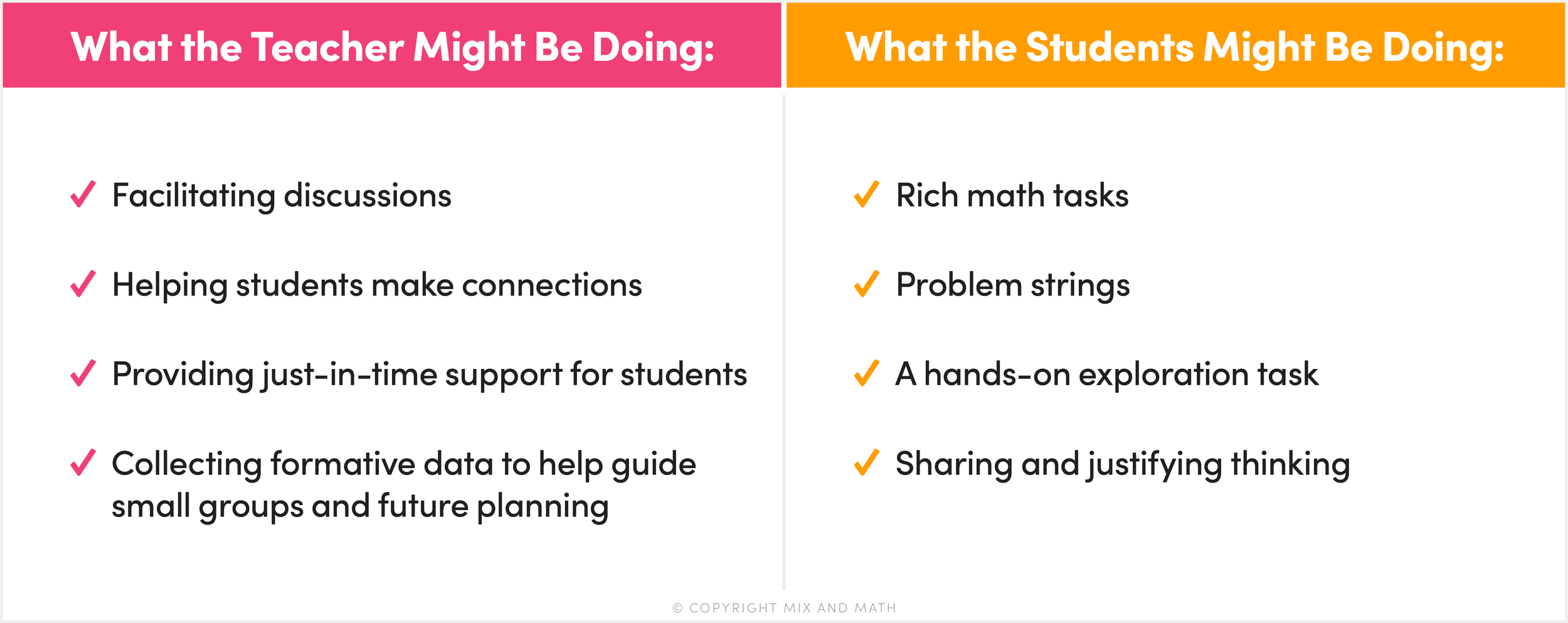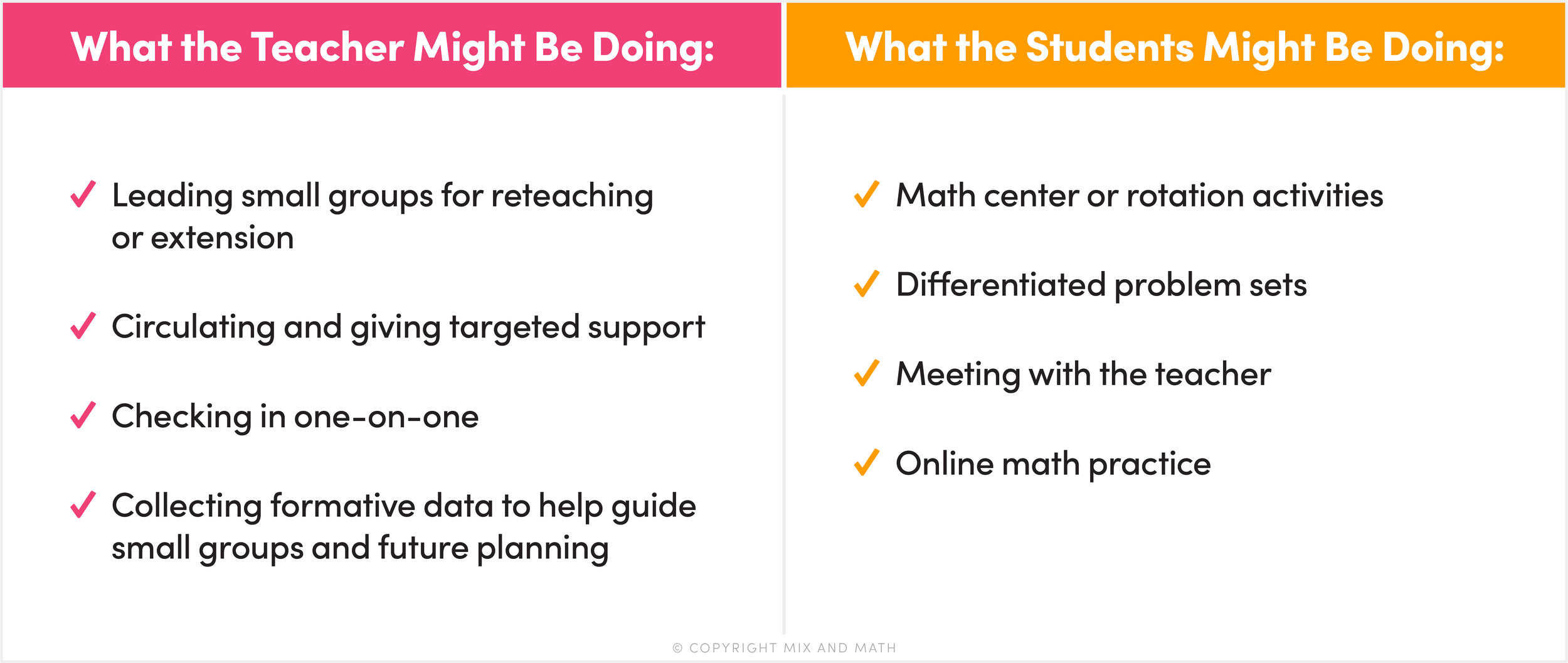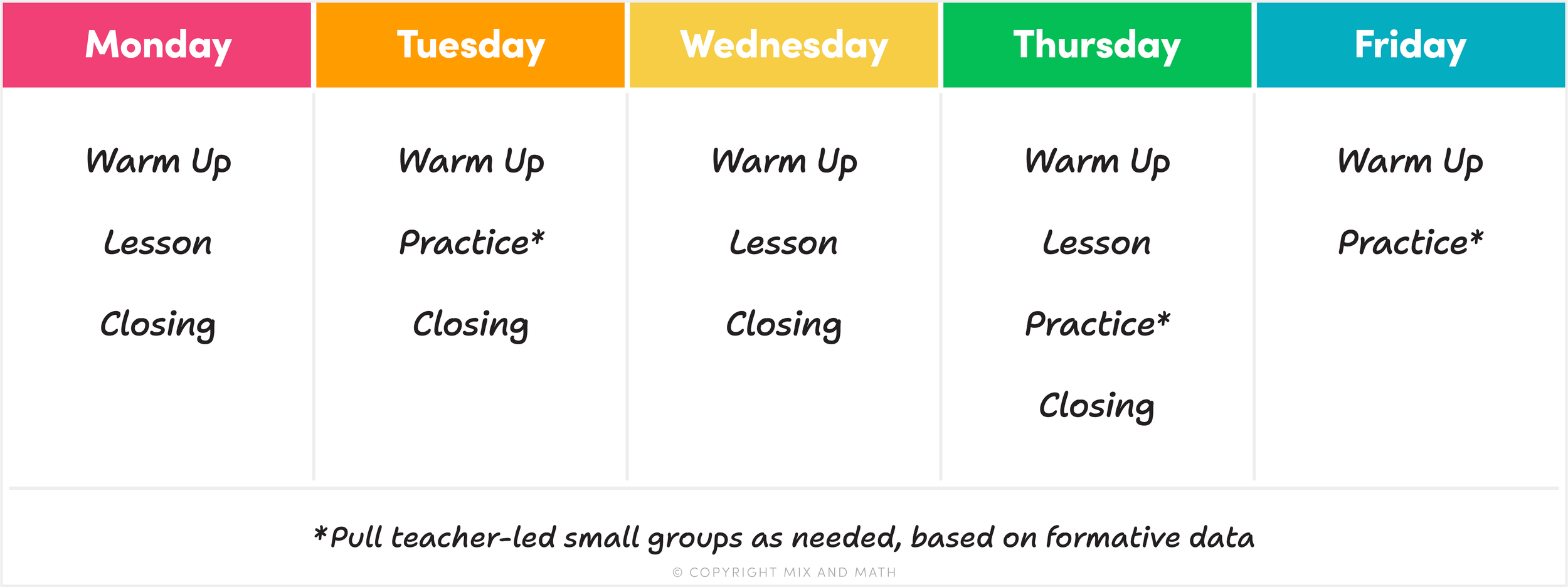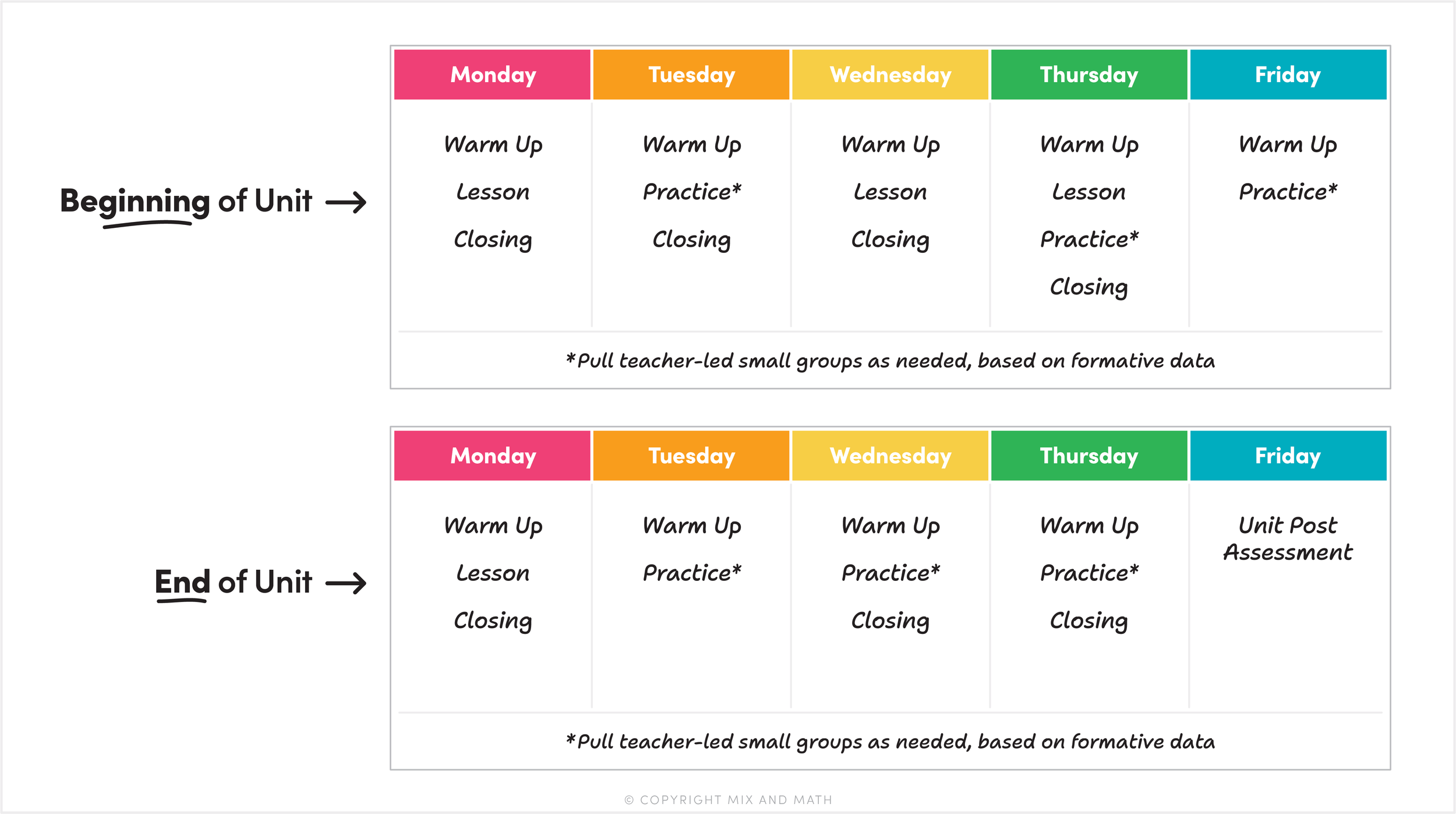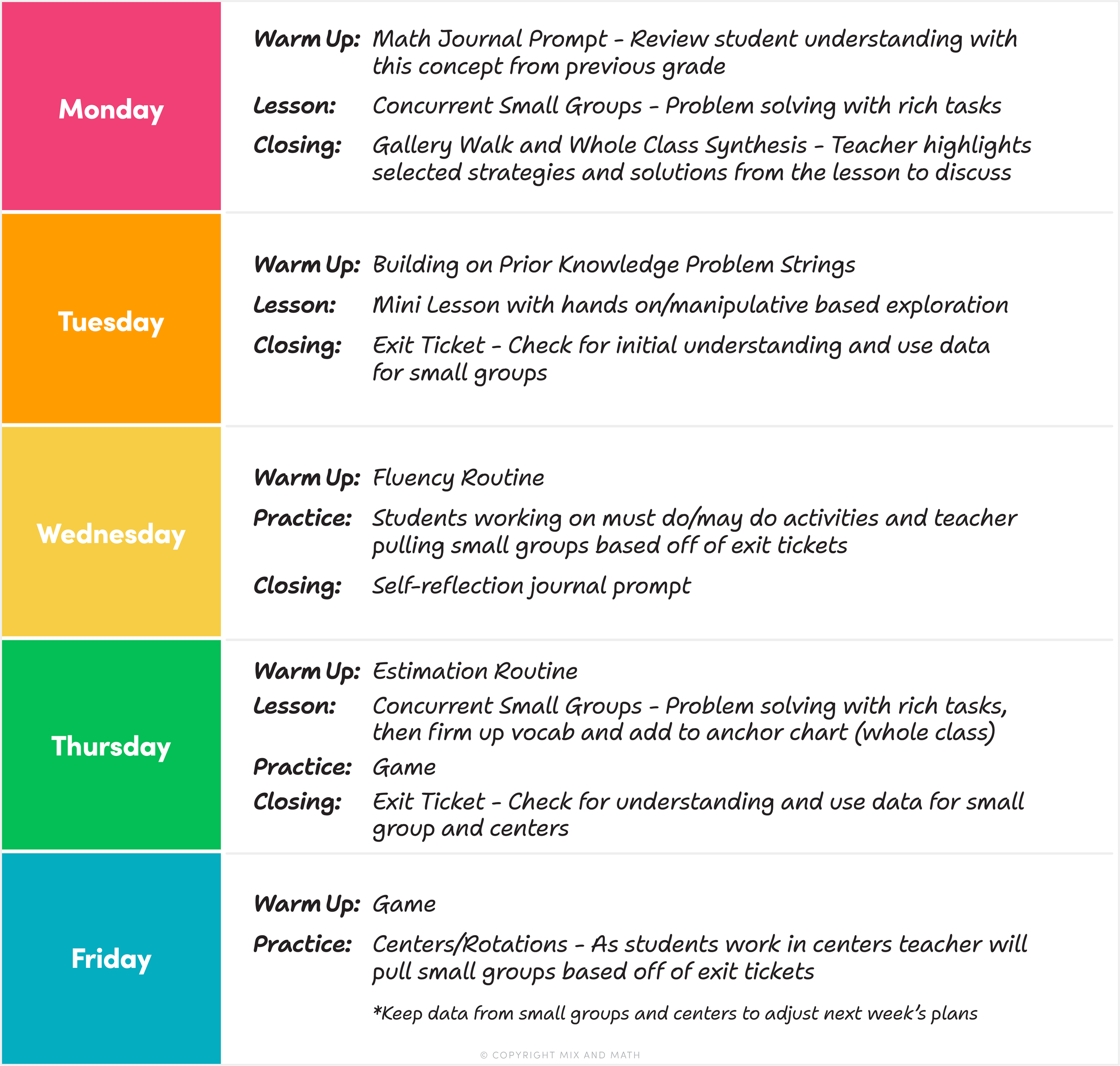Build a Better Math Block: Flexible, Student-Centered Planning
If you’ve ever found yourself googling “perfect math block schedule” during your planning period, you’re not alone. We’ve all done it. It’s that hope that we’ll finally land on that one magical structure that fits every student, every day, and every single lesson.
But here’s the truth: There is no one size fits all math block. And at first I know this might seem disappointing, but really that’s a good thing!
A strong math block isn’t a strict checklist. Instead, think of it as a flexible toolkit. You choose the tools that best fit your students, your learning goals, and your available time. Some days, you might use every tool. Other days, you might just use a few of them.
Now that doesn’t mean it’s all chaos and vibes in a math block. There are key components that help create a solid structure. You won’t necessarily use them the same way every day (or even use them all every day!), but understanding them gives you a solid foundation you can flex with confidence.
The Four Key Components: What They Are, Why They Matter, and How They Work
Let’s walk through the four main elements of a successful math block:
Warm-Up
Lesson
Practice
Closing
Each one serves a different purpose, and can look different depending on your goals, the time you have, or what your students need!
Warm Up: Ignite the Brain
Think of the warm-up time as an invitation to your math block. It’s a quick, yet powerful, way to shift students into math mode and activate their brains. It’s a great way to create curiosity, review important concepts, and set the tone for the math block that day.
Purpose
Depending on the day, your warm-up time might take on many different goals:
Reviewing a concept or strategy from a previous lesson
Building fluency or number sense through a quick routine or game
Sparking discussion through an open-ended question or prompt
Kick-starting that day’s learning in a fun or unique way
Timing and Frequency
A warm-up is meant to be short, something that only takes 5 to 10 minutes of your block. Because the warm-up invites students into the math thinking space for that day’s learning, it is also something that should occur almost daily in your math block.
Let's look at a few ways the role of the teacher and the student could look during this time:
Lesson: Build New Understanding
Now we’re getting into the heart of the block: the lesson. Students explore new ideas, test strategies, and make sense of important concepts while the teacher leads and facilitates.
Purpose
The purpose of the lesson is to build new learning. A lesson might include direct instruction, collaborative tasks, hands-on activities, or a combination of these approaches.
Timing and Frequency
Ideally, the lesson component shows up in your math block each day or nearly each day. Although the timing or format might shift based on your learning goals or the time you have in your schedule.
For example, at the start of a unit, when students have lots of new content to learn, it may be the main focus each day. At other times, like during review, you may not need a dedicated lesson block, or it might be much shorter.
Let's look at a few ways the role of the teacher and the student could look during this time:
Practice: Try, Apply, and Make It Stick
After students have spent time learning a new concept and developing new understanding, they need time to apply that learning. Practice time gives students the space to continue engaging in meaningful math, but with more independence and less direct teacher facilitation.
Students might work independently, with a partner, or in a group. The key during this time is that everyone is engaged in meaningful practice and getting what they need to grow.
Purpose
The purpose of practice isn’t just repetition. It's about:
Solidifying new learning
Making meaningful connections
Revisiting and deepening understanding of past concepts
Building confidence through application
Timing and Frequency
Practice time is the most flexible part of your math block. Some days, it follows the lesson and gets equal time. Other days, it’s built right into the lesson with no separate block. On center or rotation days, practice time might take up nearly the entire math block.
What matters most is that students regularly get time to apply what they’ve learned, whether it’s through independent work or collaboration.
Let's look at a few ways the role of the teacher and the student could look during this time:
Closing: The Power of Self-Reflection and Connection
Let’s talk about a part of the math block that often gets overlooked, but is truly invaluable: the closing. The closing of your math block is so important because it gives you a window into what students understood and where they might need more support from that day’s learning.
So even if the lesson ran long or you’re tempted to squeeze in five more minutes of group time… set a timer, pause, and give the closing its space. It’s where the learning finally clicks into place.
Purpose
The closing is all about:
Giving students time to reflect on their learning
Making connections explicit
Consolidating the learning from that day
Checking for students’ understanding: formally (like a quick exit ticket) or informally (through reflection, discussion, or student work)
Timing and Frequency
This part of the block doesn’t need to be long, just 5 to 10 minutes, but it can completely change how you plan for the next day. Because the closing gives you such insight into your students’ understanding for that day’s learning, it is also something that should occur almost daily in your math block.
Let's look at a few ways the role of the teacher and the student could look during this time:
How to Structure Your Math Block
When it comes to structuring your math block, there’s no one-size-fits-all solution. What works one day, or even for one group of students, might not work the next. And that’s okay! The real key is flexibility, both in how you plan and how you respond in the moment. Let’s dig into three ways that flexibility can strengthen your math block.
Tip #1 - It All Starts With Your Students
The more you center your block around your students’ needs, the stronger it becomes.
Every component of your block, from the warm-up to the closing, gives you insight into what your students understand, what they’re still working on, and where they need support. You’re making decisions based on the data you gather, both formally and informally, and using it to shape your instruction in real time.
Being flexible doesn’t mean winging it. It means staying grounded in your goals and adapting based on what’s actually happening in your classroom. That’s how we meet students where they are and help them grow.
So what does it actually look like to revolve your math block around your students?
Use daily observations as data. Data isn’t just exit tickets or assessments. Take note of what you notice throughout the block: student strategies, questions, and misconceptions. These informal moments can be just as valuable.
Let your students’ work guide your planning. Use what you see in journals, exit tickets, or conversations to decide or adjust what comes next. Let their work lead your instruction, not just the pacing guide.
Adjust groupings regularly. Keep small groups flexible based on what students need right now, not just where they were a week ago.
Listen to your students. Give students opportunities to reflect and share their thinking. Often what they say can give you more insight than a right or wrong answer ever could.
Don’t be afraid to pause or pivot. If something isn’t working, shift your approach or even change course the next day. That’s not a setback. That’s responsive teaching in action.
Know your content. If students need more time with one concept, you may need to adjust a later lesson or find a way to combine certain concepts later on. The better you know your content, the better you can prioritize concepts and make sure you don’t run out of time for something important.
Tip #2 - You Don’t Have to Fit All Four Components in Every Day
There are four core parts of a strong math block: a warm up, a lesson, time for practice, and a closing. Depending on how long your math block is, you might be able to include all four every day, or you might not. And that’s okay!
There are two main reasons you might flex which components you include each day:
There’s Just Not Enough Time
Sometimes your math block is shorter than you’d like, broken up by lunch or specials, or affected by a wonky schedule. In those cases, don’t try to squeeze everything in. Instead, zoom out and plan across the week. Think or plan in chunks.
What can you stretch over two or three days? What’s most essential today? That mindset shift can make a big difference in how effective and manageable your math block feels.
Let’s look at a sample schedule and see how a week might be structured when time is tight:
Notice how this teacher planned in 1-2 day “chunks.” For example, on Monday and Tuesday one learning goal is spread across both days. Monday focuses on the lesson, and Tuesday gives students time to practice and apply what they learned.
Later in the week, Wednesday and Thursday are also used together to work toward another learning goal. On Thursday, there’s time to wrap up the lesson and begin practice. Finally, Friday offers extended practice through centers or rotations, giving students extra time to strengthen the skills they've worked on all week.
2. Your Students Need Something Different
Even if you have a long block, you might still shift your structure based on where students are in the learning.
You know your students best, so you have to trust yourself to adjust the pacing as needed. If your students need more time with a concept, slow down; however, if they’re ready to move on, then move on and take that time back. Look for ways in your curriculum to build in review or combine concepts, these small shifts can make a big difference.
At the start of a unit, you might need more time for lessons to explore your new concepts. Towards the end, you might prioritize more practice time and small group instruction.
Zooming out helps here, too. Plan with the whole unit in mind. Your warm-up and closing may stay consistent most days, but your lessons and practice time should flex based on what your students need.
Let’s look at a sample of how your math block components might shift from the beginning of a unit to the end:
At the beginning of the unit, you’ll notice that most days include a dedicated lesson block to introduce and build new concepts. By the end of the unit, the focus shifts. The structure allows for more practice time, where students might work in centers, rotations, or on math menus to help solidify their understanding before assessment.
The components change, but the intention stays the same: every part of the block supports where your students are in relation to your learning goals.
Tip #3: You Don’t Have to Use the Same Routines Every Day
Flexibility isn’t just about which components you include, it’s also about how you bring them to life.
Switching up your routines keeps things fresh and engaging. One day your warm up might be a number talk, while the next day you might do a quick fluency game. Both of these warm up routines have a different purpose and they offer different types of engagement and activity for students.
The same goes for your lessons, practices, and closing routines. Some lessons might focus on a longer whole group discussion, other days you might focus on discovering new content in small groups or partner work. The same can go for your practice and closing time! Variety works across every part of your block!
Let’s look at a sample schedule and see how, once you’ve decided on your components, you can vary the structure and activities throughout the week to best support your learning goals:
Even though most days include a warm up, lesson, and closing they don’t feel repetitive because each one is structured and planned with intention.
The Big Takeaways and Getting Started
You don’t need a “perfect” math block. You need a flexible, thoughtful one.
You don’t have to fit in every component every single day. But you do want to make intentional choices about your components and their structure, so that both of these align to your learning goals and your students’ needs.
As you plan and reflect on your own block, ask yourself:
What are my non-negotiables?
What do I want math to feel like for my students each day?
How can I adapt these components to fit my classroom and my goals?
Finally, keep these tips in mind as you design your block around your students, your goals, and your specific school or district requirements:
Start with your learning goal. Then choose the components that best support it.
Don’t overpack your block. Leave room for thinking, talking, and processing.
Build predictable routines. These make transitions smoother, even when the structure or activity changes.
Try one shift at a time. If you’re trying something new, ease into it.
Use timers or anchor charts. These help students follow along and manage their time.
Chances are, you’re already doing a lot of the right things. Now, you can do them with even more clarity and confidence.

